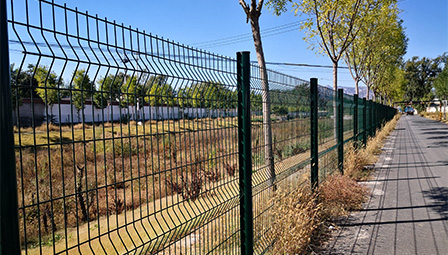Exploring the Features and Uses of Single Barbed Wire in Fencing Applications
Ott . 11, 2024 23:18
The Evolution and Significance of Single Barbed Wire
Single barbed wire, an often-overlooked yet crucial component of modern fencing, has a rich history that stretches back to the late 19th century. Its development marked a significant shift in agricultural practices, land management, and property protection. The advantages brought by single barbed wire are manifold, influencing lifestyle, industry, and the very landscape of rural communities.
Barbed wire was first patented in 1867 by Lucien B. Smith, and it quickly gained popularity as a means of enclosing livestock and protecting crops. The traditional fencing methods of wooden fences and stone walls proved to be costly and labor-intensive. Barbed wire presented a simpler, more efficient solution. With its sharp barbs strategically spaced along a single strand of wire, it effectively deterred animals from crossing boundaries, while being much more affordable and easier to install than conventional fencing options.
Single barbed wire is designed with a specific configuration of barbs spaced along a single wire strand. This design not only deters intruders but also minimizes the risk of injury to animals, as there is only one wire to navigate. The simplicity and effectiveness of this design have enabled farmers and ranchers to contain livestock while simultaneously maximizing their use of land. This is particularly important in expansive rural areas where traditional fencing would require extensive resources.
In addition to its agricultural applications, single barbed wire has also played a role in shaping the social and political landscape. In the American West during the late 1800s, the advent of barbed wire fencing instigated the infamous range wars between cattle ranchers and sheep herders. As land became increasingly enclosed, disputes erupted over grazing rights and territory. This led to a reevaluation of property ownership and usage, reflecting a more pressing need for effective land management strategies.
single barbed wire

While single barbed wire remains a staple in agricultural practices, its uses have expanded into various fields beyond farming. It is widely used in construction sites, security fencing for commercial properties, and even in military applications. The adaptability of single barbed wire makes it ideal for a range of purposes, from securing vital infrastructure to protecting sensitive areas.
Moreover, advancements in materials and technology have resulted in the production of modern barbed wire that is more durable and resistant to corrosion. This means that single barbed wire can withstand harsh environmental conditions, ensuring longevity and functionality with minimal maintenance. The wire is often galvanized or coated with vinyl, which not only extends its lifespan but also enhances its aesthetic appeal.
Despite its historical significance, single barbed wire is not without controversy. In certain contexts, it has been criticized for its potential to harm wildlife and disrupt natural ecosystems. Animals can become entangled, leading to injuries or even death. As awareness of ecological conservation grows, there is a burgeoning movement advocating for alternative fencing solutions that are more wildlife-friendly.
In conclusion, single barbed wire may appear as a simple invention, but its impact on agriculture, land management, and social dynamics has been profound. It revolutionized how land was partitioned and managed, shaping the development of rural landscapes and communities. As society continues to evolve, it will be vital to balance the practical benefits of single barbed wire with the need for ecological considerations. Embracing innovative solutions while acknowledging historical significance will lead us toward a more sustainable future in fencing practices. The enduring relevance of single barbed wire as a fencing solution is a testament to its utility, even as it faces the challenges of contemporary environmental consciousness.




















